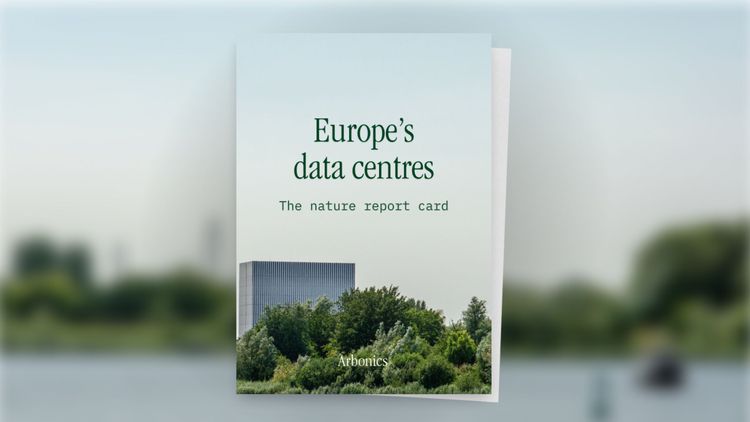Carbon Market Dictionary
The carbon market world can sometimes get confusing with all the terms and acronyms used. Here's a dictionary to help you navigate it.
| Term | Definition |
|---|---|
| Additionality | Additionality is the measure whether activity happened as a result of an incentive. In the context of carbon projects, additionality is an important measure to ensure that activities of the project result in emission reductions or removals that are above what would have happened in the absence of the project (under “business as usual” scenario). |
| Afforestation (AFF) | Afforestation is a process of planting trees on land that has not been recently forested. More about Arbonics’ approach to afforestation. |
| Article 6 | Article 6 of the Paris Agreement allows countries to voluntarily cooperate with each other to achieve emission reduction targets set out in their NDCs. This means that, under Article 6, a country (or countries) will be able to transfer carbon credits earned from the reduction of GHG emissions to help one or more countries meet climate targets. (Source) |
| Continuous cover forestry (CCF) | Continuous cover forestry is a forest management style in which a continuous cover of the forest is maintained by selectively harvesting only individual trees. This approach is different to even-aged stand management (achieved by cutting similar-aged trees during a harvest period) and will create an uneven-aged stand of trees in the management area. |
| Carbon credit | Carbon credit is a term to describe a tradable certificate or permit, which either gives the right to emit or offset the a set amount of CO2 or the equivalent greenhouse gas CO2e. Usually the set amount is equal to 1 tonne of CO2e. You can read more about carbon credits and what makes them high quality here. |
| Carbon dioxide removal (CDR) | The process of removing carbon dioxide (CO2) from the atmosphere. Includes many types of methods such as tech-based (e.g. direct air capture) and nature-based (e.g. forestry) |
| Compliance carbon markets | Compliance (or mandatory) carbon markets are regulated carbon trading systems that have nationally, regionally or internationally determined rules, and participants from heavy polluting industries (think steelworks or car manufacturers) The European Union Emissions Trading Scheme (EU ETS) is an example of a compliance market. In terms of volume, compliance markets are bigger than the voluntary market. |
| Direct air capture (DAC) | Direct air capture is a process of capturing CO2 directly from the air with an aim to reduce the amount of CO2 in the atmosphere. The captured CO2 is either safely and permanently stored or utilised so that reduction of CO2 in the atmosphere occurs and can be measured. |
| European Union Emissions Trading Scheme (EU ETS) | The European Union Emissions Trading System is an example of a compliance carbon market that operates a “cap and trade” system by which a limit is placed on the amount of emissions the participants can emit over a period by issuing emission rights (permits). The participating companies can trade emission permits in circulation and given the number of emissions are capped, have an incentive to reduce their emissions to avoid the cost of buying the permits. |
| Greenhouse gas (GHG) | A greenhouse gas is a gas in the Earth’s atmosphere that absorbs infrared radiation from the Sun in the form of heat. The process of that heat getting trapped in the Earth’s atmosphere, thanks to greenhouse gases, is called the greenhouse effect. Main greenhouse gases are water vapor, carbon dioxide, methane, ozone and nitrous oxide. |
| Impact Forestry (IF) | Impact Forestry is a solution for existing forests being developed by Arbonics. Impact Forestry aims to maximise the carbon return of forested land by adjusting harvesting plans, changing rotation lengths and using conservation if needed. It’s a custom-made plan developed in collaboration with the landowner to ensure that forested land continues to earn at least the same as it would have under usual management plan, while driving significant carbon and biodiversity benefits. |
| Intergovernmental Panel on Climate Change (IPCC) | IPCC is the United Nations body for assessing the science related to climate change. Imagine a big group of scientists from around the world. They work together to study the Earth and understand what's happening to it. This group is called the Intergovernmental Panel on Climate Change, but we usually just call it the IPCC. The IPCC scientists study things like how the Earth's climate is changing and more importantly the effects of these changes on our lives. They publish regular reports, which help our leaders and policymakers, make decisions to protect the Earth and make it a better place for everyone. Every 6 to 7 years, the IPCC publishes Assessment Reports which are the most comprehensive scientific overview of climate change in the world. The first one was published in 1990 and the latest was the Sixth Assessment Report finalised in March 2023. |
| Monitoring, reporting and verification (MRV) | In the context of carbon credits — monitoring, reporting and verification are used to prove that the claimed benefit of emission avoidance or removal has occurred in order to issue a carbon credit based on the measured benefit. Read more about monitoring afforestation projects here. |
| Nature-based solutions / natural climate solutions (NBS / NCS) | Nature-based solutions are actions that help to restore natural ecosystems and address and adapt society to environmental challenges such as climate change. These solutions are developed in collaboration with natural systems as oppose to technological one. For example encouraging the growth of trees (nature-based) for carbon capture as opposed to direct air capture plant (technological). |
| Permanence | Permanence represents how long carbon is stored or tied up for and what its risk of reversal is. Read about permanence in forest carbon projects here. |
| Verified Carbon Standard (VCS) | A standard for carbon credits developed and managed by verification organisation and standard Verra. Carbon credits known as VCUs (Verified Carbon Units) are issued as part of the program. More about carbon verifiers and standards. |
| Voluntary carbon market (VCM) | Voluntary carbon market gives individuals or organisations an opportunity to offset their emissions by purchasing carbon credits. The activity on the VCM is voluntary as oppose to mandatory in the case of compliance carbon markets. More about voluntary carbon market. |
| Verified Carbon Unit (VCU) | VCUs (Verified Carbon Units) are one type of carbon credit and one VCU represents a reduction or removal of one tonne of carbon dioxide equivalent (CO2e) achieved by a Verra project as part of their Verified Carbon Standard (VCS) program. |


